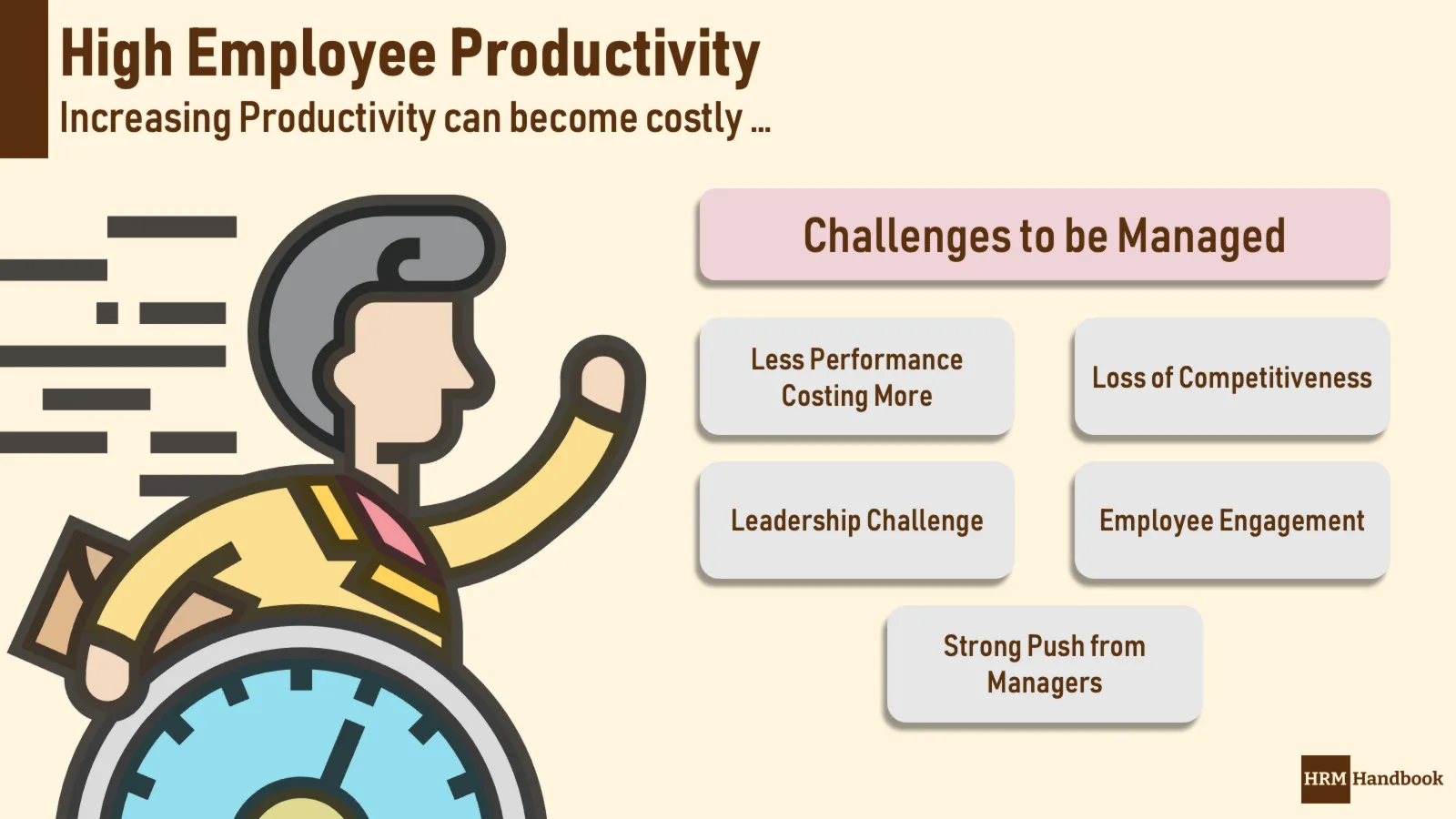Long-term Sustainable High Workforce Productivity
The constant pressure to increase employee productivity is becoming the norm in modern business. It also brings a lot of pain in many companies because both sides, employees and managers, understand the rules of the game. They know that it is often a game of catch and run. The Leadership team will introduce new rules of the game that individual managers must implement in order to increase productivity. Employees will find a way to trick them.
No increase in performance will be noticed, just new rules for in-game behaviour. Managing and maintaining high employee productivity is a challenge for HR managers. It represents the only long-term sustainable way to keep an organisation competitive. It’s about staying ahead of the curve.
Managing and improving employee productivity is not about isolated actions by the HR department. High employee productivity is a comprehensive system of fast, smart and consistent practices. And achieving the goal doesn’t come in a day. Leadership must also make productivity a key corporate objective. They must monitor progress and act on problems and shortcomings. Executive commitment is always a good start on the journey. The role of the HR department is to facilitate and take responsibility. They have to own the employee productivity system and this is a very challenging job for the HR department.
A competitive high performing organization always measures employee productivity. It measures the climate in the organization and implements related action plans. It also sets challenging goals and pushes managers to meet them. Whole line management enables creativity and innovation that reveals new ways of working.
Why is this a challenge for human resource management departments?
There is a human resource challenge associated with measuring employee productivity. HR departments and managers need to develop a system of several reasonable KPIs (key performance indicators). The system must reflect improvement and employees must be able to influence their productivity. No one likes to be blamed for things they cannot directly control. Setting the right metrics is a challenging task for the leadership team, but it is worthwhile. It produces amazing results when employees can win the short-term race.

Also, business leaders need to be role models of productivity. They cannot proclaim its importance and then take no action. They must ask every day how they can contribute to improving the performance of the organisation. They must have conversations with workers and show accountability. They must communicate all successes and areas of focus for the next period.
HR must promote all achievements. They must spread great innovation stories. They will start with small improvements in the Back Office departments. They may end with stories about the introduction of new products and services. HR must promote a “test and learn” approach. No one should be blamed for failing a test. It’s a great learning experience. On the other hand, it is a challenge because it requires a change in the mindset of managers. It is about putting the right management practices in place.
One of the most challenging tasks for HR managers is to enable everyone to become a top performer. It’s not an easy job and failure to do so has a disastrous impact on employee engagement. HR must ensure that almost every day a new competition starts. Every employee needs to see a chance to excel and have no barriers. No employee should have unfair advantages. Treating employees fairly is a critical success factor for any high-performing organization. The HR department must also make a clear distinction between engaged and disengaged employees. The satisfied ones may not be engaged and productive at all.
Successful business is also about meaningful work. Each person understands why his or her position exists in the company. Moreover, he or she knows how the job contributes to the business results. All employees are aware of their key responsibilities and are empowered to fulfill them. Line management unblocks potential problems and ensures that processes are streamlined. The manager does not create and develop processes and procedures. Employees design and update them as the organization grows and evolves.
A high-performing organization knows the secrets of employee engagement. It does not manage employees directly; this company sets a challenging goal. Leaders offer employees the freedom to determine the best ways to achieve the goals. This company is not rigid and is always innovating its performance management system. It wants to achieve results; it does not need to follow strict processes and procedures.
On the other hand, such an internal environment is very demanding on human resources. They have to adapt processes and procedures as the organization grows and its professionals change. It must offer employees meaningful work. That’s where pragmatic Organization Design methods come in.
HR leaders must design a regular process to review all job profiles. A dedicated team must review and streamline them to the absolute minimum of meaningful jobs. The job description system always tends to blow up because managers love to invent new jobs. The first question that must be asked is what is the critical importance to the company.
Employee effectiveness is also about job security. An organization cannot guarantee that a particular job will exist in the future. However, it can provide job security to committed and motivated employees. HR must promote and enforce a training strategy as the answer. Self-development is always a strategic personal advantage. Employees who are ready to change career paths always have a new job opportunity.
HR cannot make empty promises, but can guide employees to acquire new skills and competencies. A high-performing organization always scans the company to identify missing skills. It has a plan to close the gaps and can always offer job opportunities to internal candidates before going to the external market.
Managing employee productivity and performance is a challenge for the HR department. However, a smart HR organization can always find a way forward. It just needs to set up a strategic partnership with management. It has to keep employee productivity on the HR agenda.